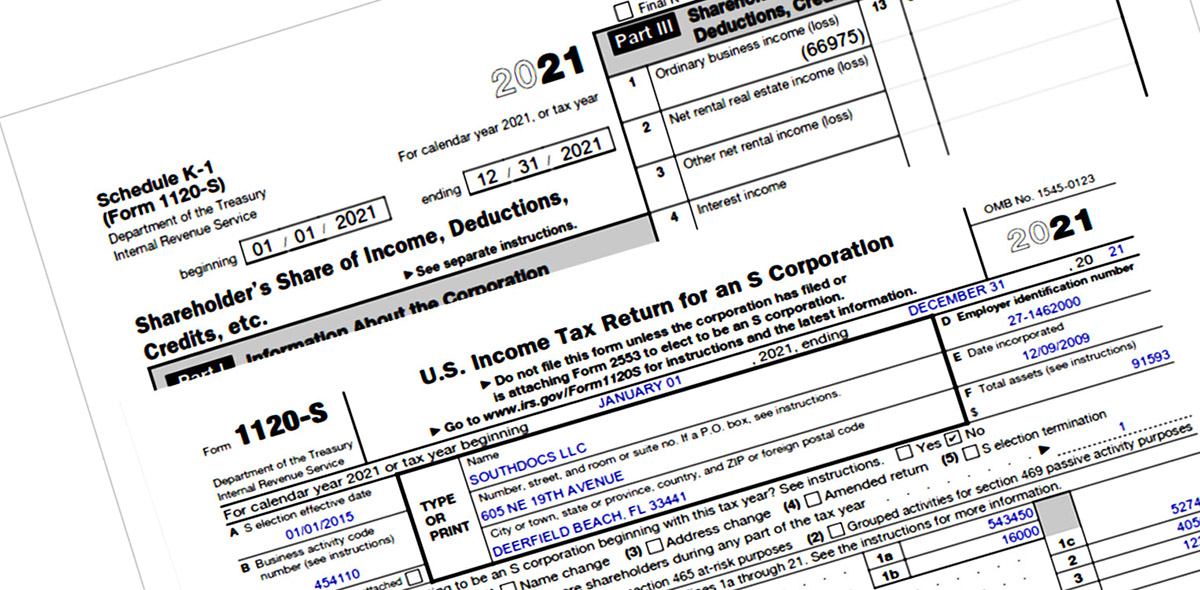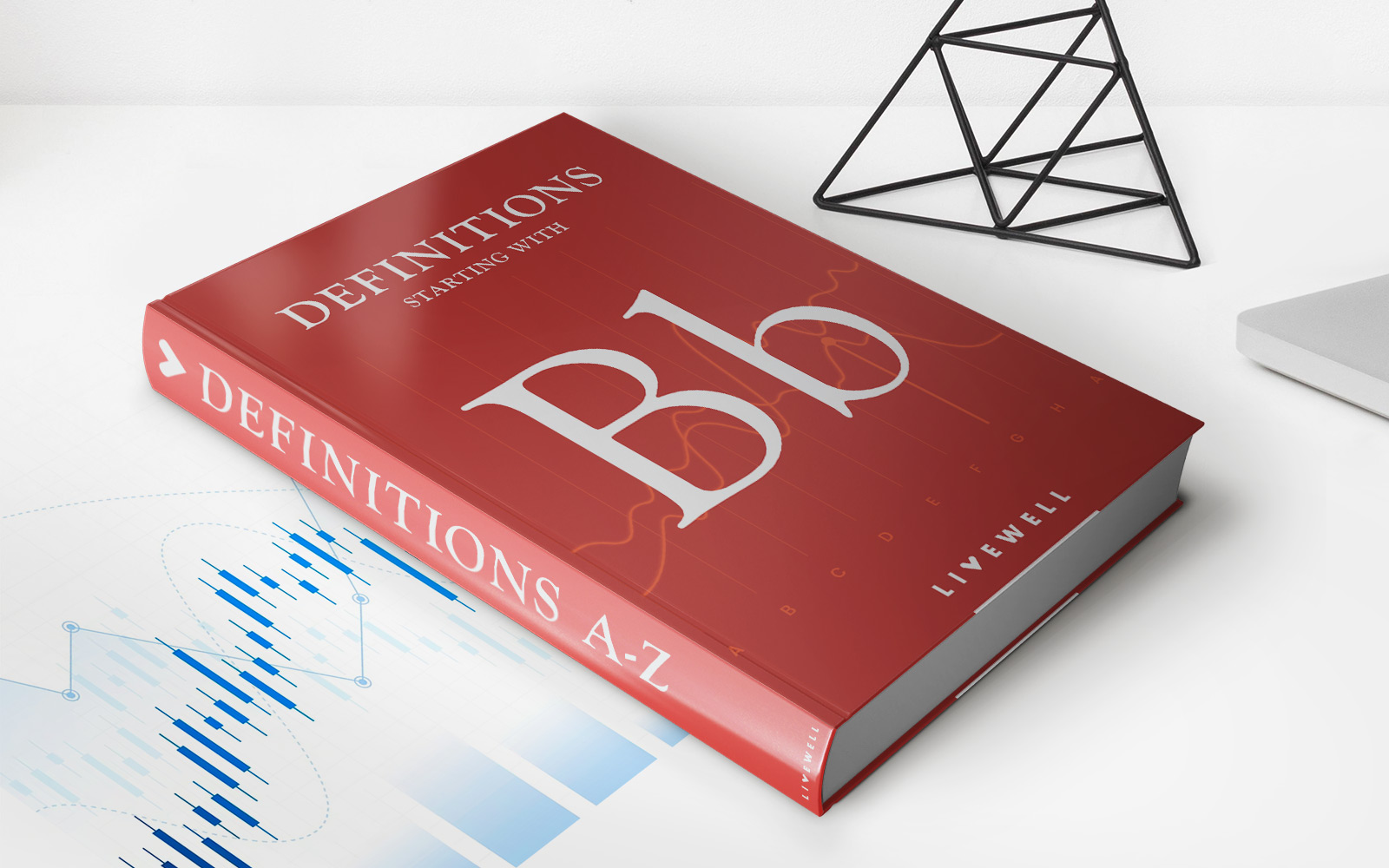

Finance
What Happens To My 401K If I Get Fired
Published: October 17, 2023
If you're fired and wondering about your 401K, learn what happens to your retirement savings and how it impacts your finances.
(Many of the links in this article redirect to a specific reviewed product. Your purchase of these products through affiliate links helps to generate commission for LiveWell, at no extra cost. Learn more)
Table of Contents
- Introduction
- Understanding the 401(k) Plan
- Vesting and Your Contributions
- Employer Contributions and Vesting
- Consequences of Termination
- Options for Your 401(k) After Termination
- Leave It in the Current Plan
- Roll Over to an Individual Retirement Account (IRA)
- Transfer to a New Employer’s Plan
- Cash Out the 401(k)
- Taxes and Penalties on Early Withdrawals
- Considerations Before Making a Decision
- Seeking Professional Advice
- Conclusion
Introduction
Getting fired can be a daunting experience, both emotionally and financially. One of the major concerns employees have when facing termination is the fate of their 401(k) plan. A 401(k) plan is an employer-sponsored retirement savings account that allows individuals to contribute a portion of their salary to build a nest egg for their future.
However, the question remains: what happens to your 401(k) if you get fired? Understanding the options available to you and the potential consequences is crucial to making informed decisions about your retirement savings.
In this article, we will delve into the intricacies of 401(k) plans and explore what happens to your 401(k) if you get fired. We will explore the concept of vesting, the impact of termination on your contributions and employer contributions, as well as various options available to you regarding your 401(k) after termination.
By gaining a comprehensive understanding of these factors, you can make informed decisions that will best align with your financial goals and protect your retirement savings.
Understanding the 401(k) Plan
Before we dive into what happens to your 401(k) if you get fired, let’s first understand the basics of a 401(k) plan. Simply put, a 401(k) plan is a retirement savings account provided by your employer. The name “401(k)” refers to the section of the Internal Revenue Code that governs these types of plans.
Contributions to a 401(k) plan are made on a pre-tax basis, meaning the money is deducted from your paycheck before taxes are taken out. This can provide an immediate tax benefit as it reduces your taxable income for the year. However, keep in mind that you will have to pay taxes on the funds when you withdraw them during retirement.
Another advantage of a 401(k) plan is the opportunity for employer matching contributions. Many employers offer a matching program where they contribute a certain percentage of your salary to your 401(k) plan, up to a specified limit. This matching contribution can significantly boost your retirement savings and is essentially free money.
It’s important to note that 401(k) plans have contribution limits set by the IRS. As of 2021, the annual contribution limit for employees under the age of 50 is $19,500. If you are age 50 or older, you may be eligible to make catch-up contributions, allowing you to contribute an additional $6,500 per year.
Now that we have a basic understanding of what a 401(k) plan entails, let’s explore how the plan is structured and how it may be affected if you find yourself facing termination.
Vesting and Your Contributions
When it comes to your 401(k) plan and employment termination, one important factor to consider is vesting. Vesting refers to the ownership of the contributions made to your retirement plan. In other words, it determines how much of your 401(k) balance you are entitled to keep if you leave your job.
There are two main types of vesting schedules: immediate vesting and graded vesting. With immediate vesting, you have full ownership of both your contributions and any employer matching contributions from day one. This means that regardless of the length of your employment, you can take your entire 401(k) balance with you if you get fired.
On the other hand, graded vesting involves a specific timeframe during which your ownership of employer contributions gradually increases. This timeframe is typically set by your employer and is known as a vesting schedule. For example, a common graded vesting schedule is the 5-year cliff vesting, where you become fully vested after 5 years of service. Another option is the 6-year graded vesting, where you become vested by 20% each year until you are fully vested after 6 years.
However, it’s important to note that regardless of the vesting schedule, you always have 100% ownership of your own contributions. This means that the money you contribute to your 401(k) is always yours, even if you get fired. So while employer contributions may be subject to vesting, your own contributions are not.
Understanding the vesting schedule of your 401(k) plan is crucial when considering the potential impact of termination. Depending on your length of service and the type of vesting schedule in place, you may be entitled to keep a portion or all of your employer contributions, even after being fired.
Now that we have a clear understanding of how vesting impacts your 401(k) contributions, it’s time to explore the fate of employer contributions and vesting if you face termination.
Employer Contributions and Vesting
In addition to your own contributions, many employers offer matching contributions as part of their 401(k) benefits package. These employer contributions can significantly boost your retirement savings. However, it’s crucial to understand how these contributions are affected if you are terminated from your job.
The fate of employer contributions in the event of termination depends on the vesting schedule outlined in your 401(k) plan. If your plan has immediate vesting, you are entitled to keep the full amount of employer contributions, regardless of your employment status. This means that even if you get fired, you will not lose any of the matching funds that your employer has contributed to your 401(k).
On the other hand, if your plan has a graded vesting schedule, the amount of employer contributions you can keep will depend on your length of service. For example, if you are under a 5-year cliff vesting schedule and get fired before completing 5 years of service, you may forfeit all or a portion of your employer contributions that have not yet vested.
It’s important to review your 401(k) plan documents or consult with your plan administrator to determine the specific vesting schedule and understand the implications for employer contributions in the event of termination.
It’s worth noting that some employers may offer immediate vesting for both employee and employer contributions, whereas others may have a graded vesting schedule for employer contributions only. The specific details of your plan will dictate how much you can retain in terms of employer contributions if you find yourself facing termination.
An important consideration when it comes to employer contributions is the potential impact on your overall retirement savings. If you lose a significant portion of unvested employer contributions, it can have a long-term effect on the growth of your retirement funds. Therefore, it’s crucial to factor in this potential loss when making decisions about your 401(k) after termination.
Now that we have covered the implications of termination on employer contributions and vesting, let’s explore what options you have for your 401(k) after you are fired.
Consequences of Termination
Termination from your job can have several consequences for your 401(k) plan. It’s essential to be aware of these potential impacts to make informed decisions regarding your retirement savings.
One immediate consequence of termination is the loss of any future employer contributions. If your employer was matching a percentage of your contributions, you will no longer receive those matching funds once you are fired. This can have a significant impact on the growth of your retirement savings, especially if you were relying on those additional contributions to build your nest egg.
Furthermore, termination can affect your vesting schedule. If you were not fully vested in your employer contributions at the time of termination, you may lose a portion of those funds. It’s crucial to understand the vesting schedule of your 401(k) plan and how termination might affect your ownership of employer contributions.
Another consequence of termination is the loss of access to certain benefits and resources provided by your employer. This can include access to low-cost investment options, financial planning services, and educational resources that were available through your employer’s 401(k) plan. Losing these resources may require you to seek alternative methods of managing and growing your retirement savings.
Additionally, termination may trigger certain tax implications and penalties if you decide to withdraw funds from your 401(k) plan. If you are under the age of 59½ and choose to cash out your 401(k) account, you may be subject to early withdrawal penalties imposed by the IRS. This can significantly reduce the amount of money you receive and potentially diminish your retirement savings.
It’s important to carefully assess the consequences of termination on your 401(k) plan and take them into consideration when exploring your options for the management of your retirement savings.
Now that we have discussed the potential consequences of termination, let’s delve into the various options you have for your 401(k) after you are fired.
Options for Your 401(k) After Termination
When you are terminated from your job, you are faced with several options regarding your 401(k) plan. Understanding these options is crucial in determining the best course of action for your retirement savings.
1. Leave It in the Current Plan: This option allows you to keep your 401(k) funds with your former employer’s plan. Depending on the plan’s rules, you may still have access to the existing investment options and benefit from any potential growth of your funds. However, you will no longer be able to contribute to the plan, and you must adhere to the plan’s withdrawal rules and fees.
2. Roll Over to an Individual Retirement Account (IRA): Rolling over your 401(k) into an IRA allows you to maintain control over your retirement funds. You can choose a traditional IRA or a Roth IRA, depending on your needs and eligibility. A rollover to an IRA offers a wider range of investment options and potentially lower fees compared to a 401(k) plan. Additionally, it provides more flexibility in managing your retirement savings.
3. Transfer to a New Employer’s Plan: If you secure a new job that offers a 401(k) plan, you may be able to transfer your existing 401(k) funds into the new employer’s plan. This option allows for the consolidation of your retirement savings and can provide continued access to employer contributions and investment options. However, it’s important to compare the new plan’s features and fees with your existing plan before making a decision.
4. Cash Out the 401(k): While cashing out your 401(k) may be an option, it is generally not recommended. Withdrawing the funds before reaching retirement age can result in immediate taxes and potential penalties. Additionally, cashing out your 401(k) means losing out on years of potential growth and may have adverse long-term effects on your retirement savings.
Before making a decision, it’s crucial to consider factors such as fees, investment options, withdrawal rules, and long-term growth potential. It is advisable to consult with a financial advisor who can help evaluate the best option based on your specific financial circumstances and retirement goals.
Now that we have explored the various options for your 401(k) after termination, it’s important to understand the taxes and penalties associated with early withdrawals.
Leave It in the Current Plan
One option you have for managing your 401(k) after termination is to leave it in your current plan. This means keeping your retirement funds with your former employer’s 401(k) plan, even though you are no longer employed by that company.
There are a few factors to consider before deciding to leave your 401(k) in the current plan:
1. Investment Options: Evaluate the investment options available in your current plan. Consider whether the plan offers a diverse range of investment choices, including low-cost index funds or actively managed funds. The performance of these investment options will directly impact the growth potential of your retirement savings.
2. Fees and Expenses: Examine the fees and expenses associated with your current 401(k) plan. These can include administrative fees, investment management fees, and other charges. High fees can eat into your overall returns and diminish the long-term growth of your funds. Compare these fees with other available options, such as rolling over to an individual retirement account (IRA), to ensure you are making the most cost-effective choice.
3. Withdrawal Restrictions: Take note of any restrictions on withdrawals from your current plan. Some plans may have limitations on when and how you can access your funds. Understanding these rules is crucial, especially if you anticipate needing to tap into your retirement savings before reaching the age of 59½.
Leaving your 401(k) in the current plan can have a few advantages:
1. Familiarity and Convenience: If you are satisfied with the investment options and services provided by your current plan, leaving your 401(k) there can be a convenient option. It allows you to continue managing your retirement funds with a provider you are familiar with, without the need to go through the process of setting up a new account.
2. Potential for Continued Growth: Depending on the performance of the investment options offered by your current plan, leaving your 401(k) there may allow your funds to continue growing. This is especially true if the plan offers a strong selection of low-cost investment options that align with your long-term investment goals.
However, there are some potential drawbacks to consider:
1. Limited Control: Leaving your 401(k) in the current plan means you are subject to the restrictions and rules set by the plan administrator. You may have limited control over investment choices and may not be able to make new contributions to the account.
2. Loss of Employer Contributions: If your former employer was providing matching contributions, leaving the plan means you will no longer receive those employer matches. This can result in a significant loss of potential retirement savings over time.
Before deciding to leave your 401(k) in your current plan, carefully consider the investment options, fees, withdrawal restrictions, and any employer match that will no longer be available to you. Assess these factors in comparison to other options, such as rolling over to an IRA or transferring to a new employer’s plan, to make the best decision for your long-term financial goals.
It’s always recommended to seek guidance from a qualified financial professional who can provide personalized advice based on your unique financial situation and retirement goals.
Roll Over to an Individual Retirement Account (IRA)
Another option to consider when managing your 401(k) after termination is to roll it over into an Individual Retirement Account (IRA). A rollover allows you to transfer the funds from your 401(k) account directly into an IRA, providing you with more control over your retirement savings.
Here are some important points to consider when deciding to roll over your 401(k) into an IRA:
1. Investment Flexibility: Rolling over your 401(k) into an IRA provides you with a wider range of investment options compared to most employer-sponsored plans. IRAs typically offer a diverse selection of stocks, bonds, mutual funds, and exchange-traded funds (ETFs), allowing you to tailor your investment portfolio to align with your risk tolerance and financial goals.
2. Cost-Effectiveness: Evaluate the fees and expenses associated with your current 401(k) plan and compare them to the costs of maintaining an IRA. While both options may have fees, IRAs often offer lower fees compared to 401(k) plans, allowing you to maximize your investment returns over the long term.
3. Access and Withdrawal Flexibility: While there are restrictions on withdrawing funds from both 401(k) plans and IRAs before reaching the age of 59½, IRAs often provide more flexibility. Some IRAs offer penalty-free early withdrawals for certain specific purposes, such as higher education expenses or purchasing a first home. Understanding the withdrawal rules and potential penalties is essential when considering a rollover.
Rolling over your 401(k) to an IRA offers several advantages:
1. Consolidation and Simplification: If you have multiple retirement accounts from previous employers, rolling them over into a single IRA can streamline your financial life. It allows for easier management and tracking of your retirement savings, facilitating a more comprehensive approach to your investment strategy.
2. Continued Tax Advantages: Like 401(k) plans, traditional IRAs offer tax-deferred growth, meaning you don’t have to pay taxes on your investment gains until you withdraw funds in retirement. Roth IRAs, on the other hand, provide tax-free growth potential, allowing you to potentially avoid taxes on qualified withdrawals during retirement. Choosing between a traditional or Roth IRA depends on your current tax situation and future expectations.
There are, however, a few considerations to keep in mind:
1. Potential Loss of Employer Contributions: If your former employer was matchi
Transfer to a New Employer’s Plan
When you change jobs and your new employer offers a 401(k) plan, one option you have for managing your previous 401(k) is to transfer it to your new employer’s plan. This is known as a direct rollover and allows you to consolidate your retirement savings into one account.
Here are some important considerations when transferring your 401(k) to a new employer’s plan:
1. Eligibility and Timing: Check the eligibility requirements of your new employer’s 401(k) plan to ensure that you are eligible to participate. Some plans may require a waiting period before you can contribute or rollover funds. Additionally, consider the timing of the transfer as it may take some time to process and initiate the rollover.
2. Investment Options and Fees: Evaluate the investment options offered by the new employer’s plan. Compare them to your previous plan’s investment options to determine if there are any significant differences in terms of variety, performance, and expense ratios. Additionally, review the fees and expenses associated with the new plan to ensure they align with your long-term investment goals.
3. Vesting Schedule: Take into account the vesting schedule of the new plan. If your previous 401(k) plan had employer matching contributions, consider how the transfer will impact your vesting status in the new plan. Make sure you understand how long you need to stay with the new employer to become fully vested in any employer contributions.
Transferring your 401(k) to a new employer’s plan offers several benefits:
1. Consolidation of Retirement Savings: By transferring your previous 401(k) to the new employer’s plan, you can consolidate your retirement savings into one account. This simplifies the management of your investments and allows for better oversight of your overall retirement strategy.
2. Access to Employer Contributions: If the new plan offers employer matching contributions, participating in the new plan allows you to continue benefiting from these contributions. Employer matches can significantly boost your retirement savings and help you reach your goals faster.
However, there are a few things to consider:
1. Investment Options and Restrictions: Evaluate the investment options and restrictions of the new employer’s plan. Ensure that the available investment options align with your risk tolerance and long-term financial goals. Additionally, be aware of any restrictions on investment changes or withdrawals in the new plan.
2. Comparison with Other Options: Consider the benefits of transferring your 401(k) to a new employer’s plan compared to other options, such as leaving it in your previous plan or rolling it over to an IRA. Compare the investment options, fees, and overall suitability of each option based on your specific financial situation and retirement goals.
Before making a decision, it’s important to review the details of your new employer’s plan, consult with a financial advisor, and carefully consider your long-term retirement objectives. By doing so, you can make an informed choice that aligns with your financial goals and maximizes your retirement savings potential.
Cash Out the 401(k)
One option that may be available to you when you leave a job and have a 401(k) plan is to cash out the funds. This means withdrawing the entire balance of your 401(k) account as a lump sum payment. While this option provides immediate access to the money, it is generally not recommended due to the potential negative consequences.
Here are some important points to consider before deciding to cash out your 401(k):
1. Tax Implications: If you cash out your 401(k) before reaching the age of 59½, the withdrawn amount will be treated as taxable income. This means you will have to pay income taxes on the distribution, which can significantly reduce the amount you receive. Additionally, if you do not complete a direct rollover or transfer the funds into another qualified retirement account within 60 days, the distribution may also be subject to a 10% early withdrawal penalty imposed by the IRS.
2. Loss of Retirement Savings: Cashing out your 401(k) means sacrificing the potential growth and compounding effect of those funds over time. By withdrawing the money, you will miss out on the opportunity for your retirement savings to continue growing and potentially may not have enough saved up for a comfortable retirement in the future.
3. Inability to Replenish Retirement Savings: Once you cash out your 401(k), you will no longer have the ability to contribute to that account. This can have a significant impact on your ability to save for retirement, especially if you are starting from scratch with a new job and a new retirement plan.
While there may be situations where cashing out the 401(k) is necessary due to financial emergencies or critical needs, it should generally be viewed as a last resort. Remember that your 401(k) is designed to provide financial security in retirement, and tapping into those funds prematurely can jeopardize your long-term financial well-being.
It is important to consider alternative options such as rolling the funds into an IRA or transferring it to a new employer’s plan. These alternatives allow you to keep your retirement funds growing tax-deferred or tax-free and maintain the opportunity for long-term wealth accumulation.
Before making any decisions about cashing out your 401(k), it is strongly advised to consult with a financial advisor or tax professional. They can help you evaluate your specific financial situation, assess the potential tax consequences, and explore alternative strategies to preserve and grow your retirement savings.
Taxes and Penalties on Early Withdrawals
When it comes to early withdrawals from a 401(k) plan, it’s crucial to understand the potential tax implications and penalties involved. Withdrawing funds from your 401(k) before reaching the age of 59½ can have significant financial consequences. Here’s what you need to know:
1. Income Taxes: Any amount you withdraw from your 401(k) will be subject to income taxes. This means that the withdrawn funds will be added to your taxable income for the year and taxed at your applicable tax rate. The specific tax impact will depend on your overall income and tax bracket.
2. Early Withdrawal Penalty: In addition to income taxes, early withdrawals from a 401(k) plan are typically subject to a 10% penalty imposed by the Internal Revenue Service (IRS). This penalty is designed to discourage individuals from tapping into their retirement savings before reaching retirement age.
3. Exceptions to Penalties: While the general rule is to pay the 10% early withdrawal penalty, there are certain exceptions that may allow you to avoid or reduce the penalty. Some common exceptions include financial hardship, disability, medical expenses that exceed a certain percentage of your income, or if you are separating from service from your employer at age 55 or older.
4. Mandatory Withholding: If you choose to withdraw funds from your 401(k), your plan administrator is required to withhold 20% of the distribution for federal income taxes. This withholding helps ensure that you are paying at least a portion of the taxes upfront. However, it’s important to note that the actual tax liability may be higher or lower when you file your tax return at the end of the year.
5. State Taxes: In addition to federal taxes, you may also be subject to state income taxes on your early 401(k) withdrawals. The specific state tax rules vary, so it’s important to understand the regulations in your state of residence.
It’s important to carefully consider the tax implications and penalties before making a decision to withdraw from your 401(k) before reaching retirement age. In most cases, early withdrawals should be avoided unless absolutely necessary due to financial hardship or unforeseen circumstances.
If you are considering an early withdrawal, it’s highly recommended to consult with a financial advisor or tax professional. They can provide guidance specific to your situation, help you understand the potential tax consequences, and explore alternative strategies to address your financial needs while preserving your long-term retirement savings.
Remember, your 401(k) is designed to provide financial security in retirement, and early withdrawals should be approached with extreme caution to avoid unnecessary taxes and penalties that can jeopardize your future financial well-being.
Considerations Before Making a Decision
When it comes to managing your 401(k) after termination, there are several important factors to consider before making a decision. Each option has its own advantages and disadvantages, and understanding these considerations will help you make an informed choice. Here are some key factors to keep in mind:
1. Financial Goals and Retirement Planning: First and foremost, evaluate your financial goals and retirement plans. Consider factors such as your desired retirement age, lifestyle expectations, and the amount of savings required to meet those goals. This will help guide your decision-making process and determine the best course of action for your 401(k) funds.
2. Investment Opportunities: Assess the investment opportunities available within each option. Consider the variety of investment options, past performance, and fees associated with each choice. Evaluate how these options align with your risk tolerance and long-term investment goals.
3. Tax Considerations: Determine the potential tax implications of each option. Consider the impact of income taxes and early withdrawal penalties, as well as any potential tax advantages associated with specific retirement accounts, such as IRAs. Consult with a tax professional to understand the tax consequences of each option in your specific financial situation.
4. Access to Funds: Assess your current and future financial needs. Consider whether you will need access to the funds in the short term or if you can comfortably leave them untouched until retirement. If you anticipate needing the funds before retirement, explore options that provide flexibility for withdrawals without significant tax penalties.
5. Employer Match: Take into account any employer match offered in your previous or new employer’s plan. If either plan offers a generous employer match, consider the impact on your retirement savings and take that into consideration when making a decision about your 401(k).
6. Long-Term Growth Potential: Evaluate the potential for long-term growth and compounding of your retirement savings within each option. Consider the historical performance of the investment options and the impact of fees on your overall returns. Assess which option provides the best potential for maintaining and growing your retirement funds over time.
7. Professional Advice: Seek guidance from a qualified financial advisor or tax professional. They can provide personalized advice based on your specific financial situation, retirement goals, and tax circumstances. Their expertise will help you navigate through the various options and make an informed decision tailored to your needs.
Remember that everyone’s financial situation is unique, and what may be the right choice for one person may not be the best option for another. Carefully weigh these considerations to determine the most suitable route for your 401(k) funds, taking into account your individual circumstances and long-term financial objectives.
By carefully considering these factors and seeking professional guidance, you can make a well-informed decision regarding your 401(k) after termination and take the necessary steps to ensure the continued growth and security of your retirement savings.
Seeking Professional Advice
When it comes to important financial decisions, such as managing your 401(k) after termination, seeking professional advice is always a wise course of action. Consulting with a qualified financial advisor or tax professional can provide invaluable guidance and assistance tailored to your specific circumstances. Here are some key reasons why seeking professional advice is beneficial:
1. Expertise and Knowledge: Financial advisors and tax professionals have the expertise and knowledge in retirement planning, investment strategies, and tax regulations. They can help you navigate the complexities of different options for your 401(k) and provide personalized advice based on your unique financial situation and goals.
2. Retirement Planning Guidance: A professional can help you develop a comprehensive retirement plan that aligns with your goals and risk tolerance. They can assess your current financial situation, evaluate your retirement savings needs, and recommend strategies to optimize your 401(k) and other retirement accounts for long-term growth.
3. Tax Efficiency Strategies: Tax professionals can provide guidance on tax-efficient strategies when handling your 401(k) funds. They can help you understand the tax consequences of different options and recommend strategies to minimize taxes while maximizing the growth potential of your retirement savings.
4. Maximizing Investment Returns: Financial advisors can assess your investment options within your 401(k) plan or alternative options such as IRAs. They can provide recommendations on asset allocation, diversification, and investment selection to help you achieve optimal investment returns based on your risk tolerance and time horizon.
5. Long-Term Financial Planning: Professional advisors can help you integrate your 401(k) decisions into a broader financial plan. They can evaluate your overall financial goals, such as saving for education, purchasing a home, or building an emergency fund, and advise on how your retirement savings fit within the broader picture.
6. Compliance and Legal considerations: Professionals can guide you in navigating the legal and compliance aspects of managing your retirement accounts. They can ensure that you are aware of any regulations, restrictions, or deadlines associated with your 401(k) plan and help you stay in compliance with the changing rules and regulations.
7. Peace of Mind: Seeking professional advice provides peace of mind, knowing that you have received expert guidance to make informed decisions about your 401(k) and overall retirement strategy. Professionals can alleviate concerns and help you feel more secure in your financial future.
Remember to engage with reputable professionals who have relevant experience and proper credentials in the areas of retirement planning and tax advice. Look for Certified Financial Planners (CFPs) or Certified Public Accountants (CPAs) who specialize in retirement planning or taxation.
Ultimately, seeking professional advice empowers you to make well-informed decisions about your 401(k) and ensures that you are taking advantage of the most suitable options for your financial well-being. With their guidance, you can navigate the complexities of retirement planning and optimize your retirement savings to secure a comfortable future.
Conclusion
Managing your 401(k) after termination requires thoughtful consideration and decision-making. Understanding the options available to you and the potential consequences is crucial to protecting and growing your retirement savings. Throughout this article, we have explored the various choices you have regarding your 401(k) when faced with termination.
Whether you decide to leave your 401(k) in the current plan, roll it over into an Individual Retirement Account (IRA), transfer it to a new employer’s plan, or cash it out, each option comes with its own advantages and disadvantages. Your financial goals, investment preferences, tax considerations, and immediate financial needs should guide your decision-making process.
It is important to consider factors such as investment opportunities, fees, access to funds, employer contributions, and the potential for long-term growth. Seeking professional advice from financial advisors or tax professionals can provide you with tailored guidance and ensure that you make informed decisions aligned with your specific financial circumstances and retirement objectives.
Remember, your 401(k) is a valuable retirement savings tool, and preserving and growing those funds should be a priority. Early withdrawals and cashing out your 401(k) should generally be avoided, as they can lead to adverse tax consequences and a reduction in your long-term retirement savings.
By carefully considering your options and seeking expert advice, you can make the most appropriate decision for your 401(k) after termination. A well-planned strategy will help ensure the continued growth and security of your retirement savings, putting you on the path towards a financially secure future.
Make use of the information provided in this article as a foundation for further research and discussions with professionals, ultimately enabling you to develop a personalized plan that aligns with your retirement goals. Your financial future is in your hands, and by making informed decisions, you can take control and set yourself up for success in retirement.














